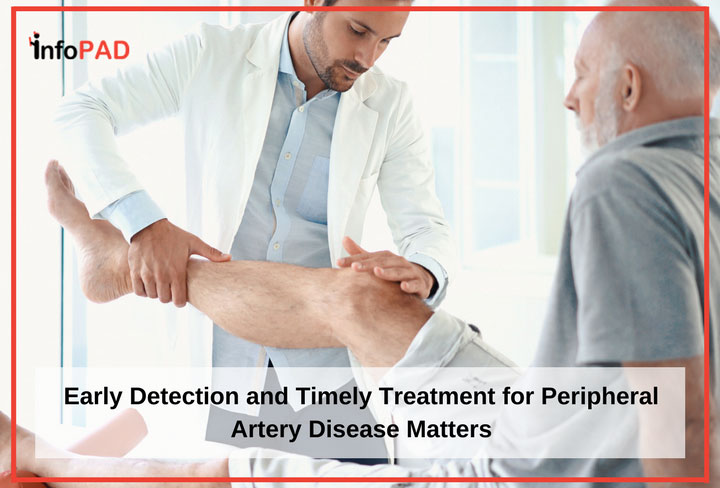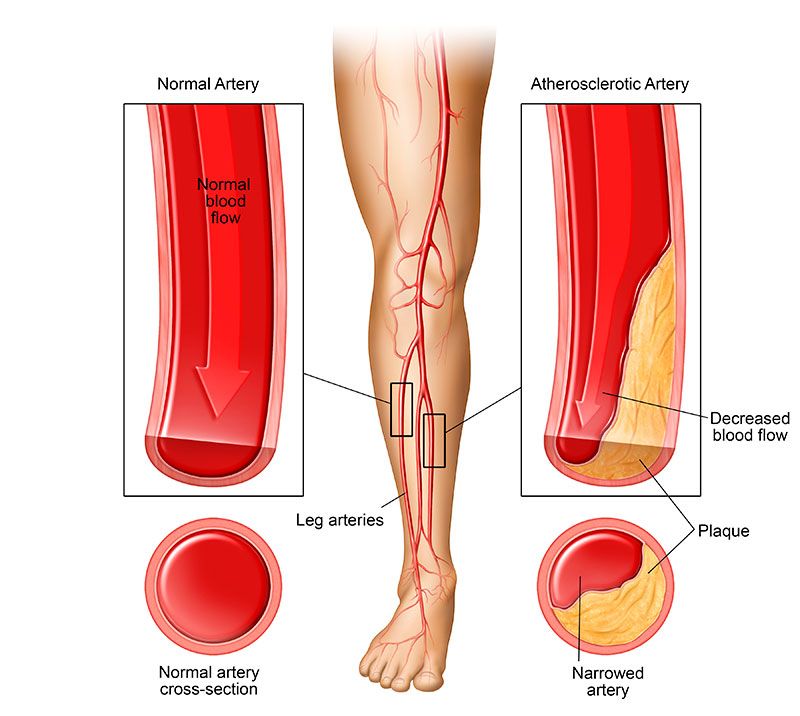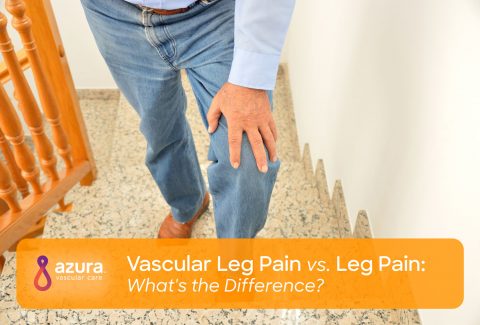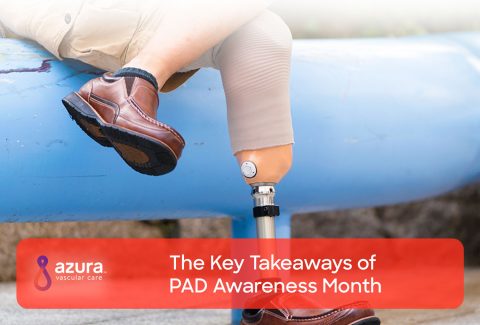
Azura Vascular Care is helping to educate those who may be at risk of peripheral arterial disease (PAD)—and if diagnosed, that early treatment for PAD matters. Peripheral artery disease affects nearly one in five Americans age 65 and older. If left untreated, complications from PAD can lead to stroke, heart attack or even death.
PAD is a common, but serious condition that is often unrecognized. Treatment for peripheral artery disease and lifestyle changes may slow or stop the progression of the disease, and may reduce further complications. Learning more about the disease, who is at risk, serious symptoms, and why not to delay diagnosis are the first steps to understanding that PAD is treatable.
PAD is a circulatory disease in which blocked or stenotic (narrowed) arteries reduce blood flow to the extremities, usually to the legs and feet. The narrowing of the arteries due to plaque buildup occurs gradually, blocking or restricting the flow of blood, which can make walking a painful effort. Many assume this painful experience is a normal part of the aging process, not realizing it could be a warning sign for PAD.

People who are at risk for PAD include anyone who is older than 50, especially those who are African American, Native American or Hispanic; have a family history of vascular disease, diabetes, heart attack or stroke; or have a history of high blood pressure, high cholesterol, diabetes, or cigarette smoking.
Do not ignore these serious PAD symptoms:
- Sores or wounds on toes, feet, or legs that do not heal
- Lower temperature in one leg
- Poor nail growth on toes and decreased hair growth on your legs
- Discoloration of the toes, feet or legs (bluish color to the skin)
[Related Article: 8 Ways to Tell if You Are At Risk for Peripheral Artery Disease]
If you are experiencing serious symptoms of PAD, particularly non-healing sores on the legs or feet, early detection and treatment for peripheral artery disease matter. It is recommended you speak with your physician about getting screened for PAD immediately. The sooner you are diagnosed and begin PAD treatment, the lower your risk of the disease progressing. If you have been diagnosed with PAD and have not started treatment, waiting too long can decrease chances of having a minimally invasive treatment plan as an option and can increase the risk for serious complications, such as chronic infection or gangrene. PAD, if left untreated, may leave amputation as the only treatment option.
Azura Vascular Care centers provide safe and comfortable environments with easy scheduling of minimally invasive, outpatient procedures. The vascular specialist and clinical staff at Azura outpatient centers combine medical expertise and compassion to guide you through your PAD treatment journey every step of the way, providing symptomatic relief and getting you back to your daily routine quickly.
If you have been diagnosed with PAD, contact an Azura center to learn more, or request a PAD appointment online.


